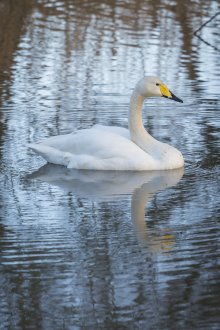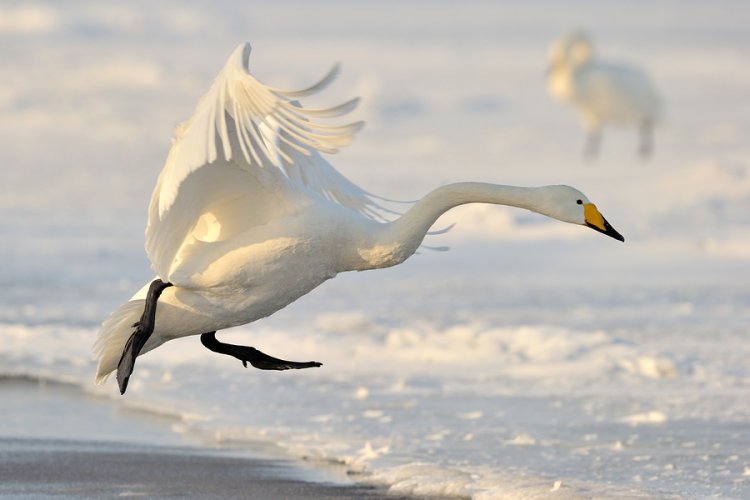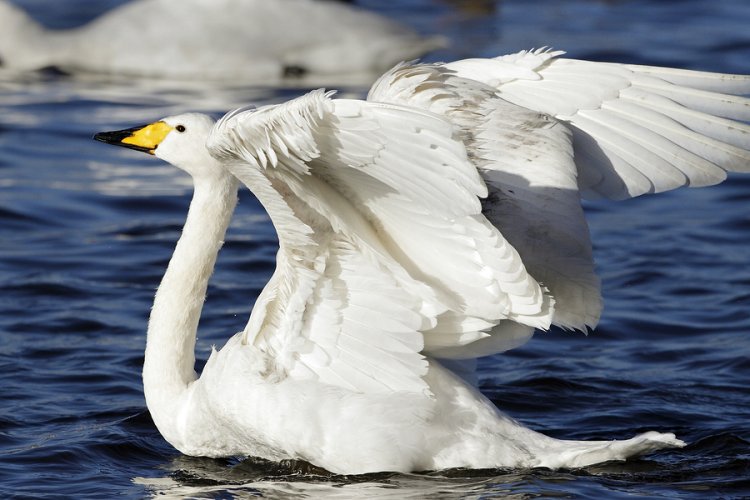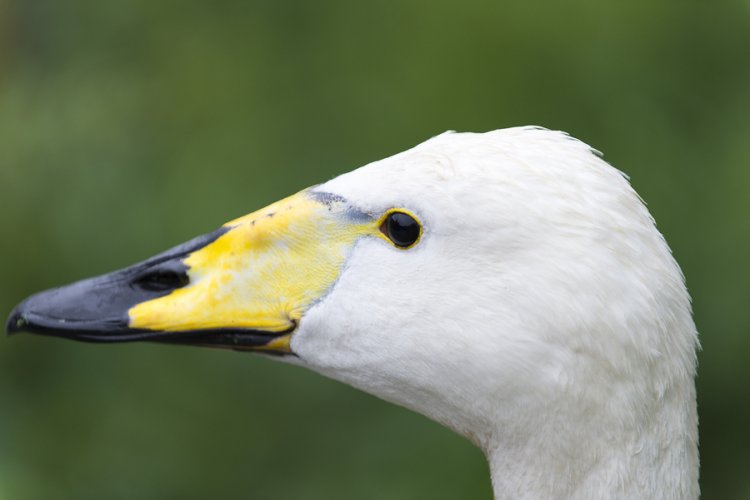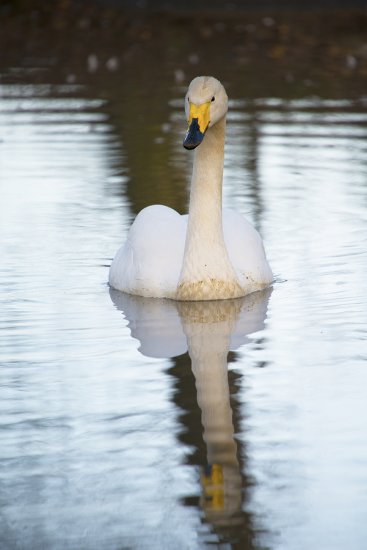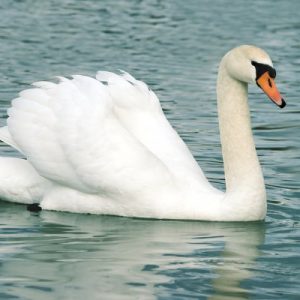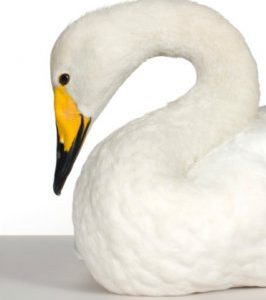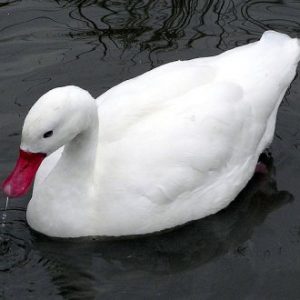Whooper Swans for sale
Cygnus cygnus
Whooper Swans are THE swan, Cygnus cygnus, the archetype of all that has been written through the centuries about swans. They have all white feathers, black bills that have a triangular yellow marking, and black feet.
These birds are big – averaging around 25-30 pounds, making them among the heaviest flying birds in the world. Not only can they fly, they migrate great distances. One migration path has been measured at 800 miles! The wing span of a Whooper Swan is between 81 and 102 inches.
The Whooper is the counterpart to the North American Trumpeter Swan. The two are similar, yet developed completely separately, on opposite sides of the globe.
Range: The Whooper Swan has a large range, from Iceland to Asia, with some reports of birds in western North America. They are migratory, and migrate to Europe, particularly Ireland, Scotland, and Britain, and across Asia.
Habitat: Whoopers are less particular about their habitat than some other species of swans. They will inhabit fields, swamps, coastal areas, farmland, and just about any area with plenty of water.
Status in the wild: The overall population of wild Whooper Swans is fragmented, and some groups are declining, others are stable, and some are increasing. Because the species’ range is so large, it cannot be considered vulnerable by the International Union for the Conservation of Nature (ICUN).
Status in aviculture: The Whooper has long held sway in the imaginations of many, and is well represented in aviaries and zoos throughout the world. It does not breed well in captivity unless a secluded, sheltered nesting area is provided.
Breeding Season: Beginning in mid-May
Clutch Size: 4-7 eggs
Incubation Period: 36 days
Miscellaneous Notes: The Whooper is the most “talkative” of all the swans, honking and calling to one another during flight.
Whoopers mate for life and are monogamous. Cygnets stay with the parents through the first winter and will often re-join the parents, with older siblings for a few years.
The yellow marking on the bill of a Whooper is unique in the same way that human fingerprints are unique. Scientists sometimes use the yellow markings to identify individual Whooper Swans.
Juveniles are brownish-grayish and have a pink and yellow beak.
The male guards the female and the eggs during incubation and helps care for the cygnets when they hatch.

